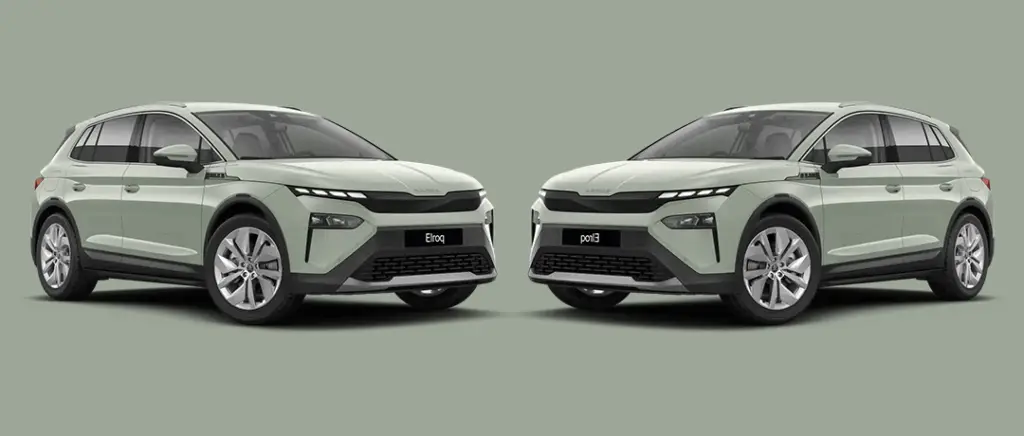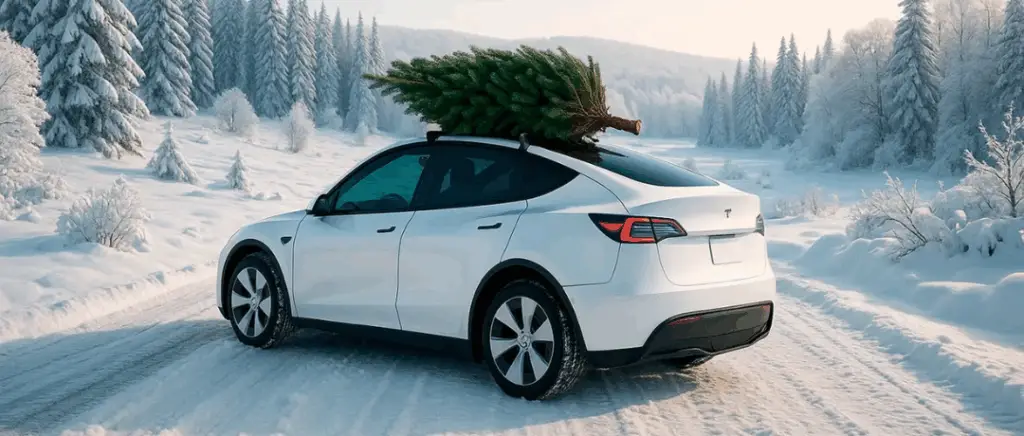Monday to Friday
9am - 12.30pm - 2pm - 7pm
What is the cost of owning a vehicle fleet ?
For a company, the TCO (total cost of ownership) is an essential tool for assessing the overall cost of owning a vehicle or fleet throughout its life cycle. This indicator can also be used to define the operating costs of a vehicle fleet in several categories:
- fuel and electricity costs: these represent one of the largest items in the total cost of ownership for an SME or VSE. However, they depend on the type of fuel used by the vehicle, its average consumption and the number of kilometres travelled by the vehicle each year.
- repair and maintenance costs: these will depend on the design of the vehicle, the quality of its components and its use. They include maintenance, out-of-warranty repairs, tyres and insurance. Maintenance costs increase exponentially over the life of the vehicle, and can vary greatly over time. They represent approximately 20 % from the TCO.
- depreciation: the value of an asset decreases over time as it wears and deteriorates. For a company, this represents the difference between the purchase price of the vehicle and the projected resale price. It varies according to the make, model, condition and mileage of the vehicle. It represents approximately 41 % of the TCO.
- Insurance: professional electric cars with a high insurance rating cost less to insure overall. What's more, taking out comprehensive insurance for the whole fleet rather than specific insurance for each vehicle can help you save money. Insurers offer specific insurance policies for fleets of vehicles. However, before choosing an insurance policy, you need to understand the risks involved. For example, if you opt for an electric vehicle, you will need to take out comprehensive insurance rather than traditional insurance.
TCO: how do you know the cost of an electric vehicle?
We compared TCO costs between the Mégane e-Techthe Electric SUV the brand Renaultand its internal combustion equivalent. The aim of this study is to determine the financial advantages of an electric motor compared with a combustion engine.
We have chosen to consider the case of an executive who travels an average of 30,000 km per year on a long-term hire contract. The TCO for a rental takes into account :
- the rent or purchase price
- maintenance and tyre costs
- insurance costs
- parking
- TVS
- the bonus or ecologic malus
- fuel or refuelling costs
- depreciation
Below is a detailed table of cost differences over five years:
| Modèle de voiture | Renault Megane e-Tech | Renault Megane |
|---|---|---|
|
Purchase cost
|
37 200 €
|
29 300 €
|
|
Government grants (ecological bonus, conversion premium)
|
6 500 €
|
0 €
|
|
Insurance cost / year
|
840 € x 5 = 4 200 €
|
840 € x 5 = 4 200 €
|
|
Maintenance cost / year
|
720 € x 5 = 3 600 €
|
1080 € x 5 = 5 400 €
|
|
Cost of a terminal
|
1 200 €
|
0 €
|
|
Parking / year
|
0 €
|
720 € x 5 = 3 600 €
|
|
TVS / year
|
0 €
|
290 € x 5 = 1 450 €
|
|
Fuel consumption and costs for 30,000 km
|
816 € x 5 = 4 080 €
|
3 600 € x 5 = 18 000 €
|
|
TCO
|
40 180 €
|
61 950 €
|
This summary TCO table shows that the electric car is more economical than the internal combustion car over a five-year period, with a difference in purchase cost of €21,770. The difference will be even greater with a lease.
Tax benefits and support for electrifying your car fleet
With the introduction of the LOM (the law on the orientation of mobility), companies are now required to 10 % of low-emission vehicles in their vehicle fleet. This threshold will be 20 % in 2024 and 35 % in 2027. to reach 50 % in 2030.
Also read → LOM Act: what measures for transport mobility?
For a company, renewing its car fleet is no longer a risk with the availability of existing grants for the acquisition of electric cars. They can even reduce the cost of electric cars by between 15 and 25 % compared with their internal combustion equivalents. Here are the various incentives available to you as a VSE or SME:
Tax benefits
Exemption from company car tax
In France, companies that own or use private or multi-purpose vehicles are required to pay company car tax (TVS). This obligation applies to all companies, without exception.
As a company owning, using or leasing clean vehicles emitting less than 60 g/km of CO2, you benefit from an exemption from the new annual taxes on CO2 emissions and atmospheric pollutants, which replace the old TVS. This exemption is one of the elements in the TCO calculation.
Grey card exempt from regional tax
Since 2020, unlike combustion-powered cars, electric cars have been exempt from car tax. regional tax on your vehicle registration documents. A money-saving opportunity for your business.
Attention → The amount and percentage of the exemption may vary from one region or department to another.
| Régions | Montant de la taxe régionale pour 1 CV | Pourcentage d'exonération pour les véhicules propres |
|---|---|---|
|
Auvergne- Rhône-Alpes
|
43 €
|
100 %
|
|
Burgundy-Franche-Comté
|
51 €
|
100 % (0 % at 1ᵉʳ July)
|
|
Brittany
|
51 (€55 from 1ᵉʳ May)
|
50 (0 % on 1 May)
|
|
Centre-Val de Loire
|
49.80 €
|
50 %
|
|
Corsica
|
27 €
|
100 %
|
|
Great East
|
48 €
|
0 %
|
|
Hauts-de-France
|
34.5 €
|
50 %
|
|
Île-de-France
|
46.15 €
|
100 %
|
|
New Aquitaine
|
45 €
|
0 %
|
|
Occitania
|
44 €
|
100 % until 28 February
|
|
Pays de la Loire
|
51 €
|
0 %
|
|
Provence-Alpes-Côte d'Azur
|
51.20 €
|
100 %
|
|
Guadeloupe
|
41 €
|
0 %
|
|
French Guiana
|
42.50 €
|
0 %
|
|
Meeting
|
51 €
|
0 %
|
|
Martinique
|
30 €
|
0 %
|
|
Mayotte
|
30 €
|
0 %
|
|
Normandy
|
35 €
|
100 %
|
Source : Public services
Beev We therefore recommend that you find out more about the official prefecture website to find out which rules apply in your area. A simulator is also available on the portal to find out the price of the tax horse.
Incentive tax depreciation for company electric vehicles
There is a ceiling on the depreciation of electric vehicles. However, the depreciation threshold for an electric car is higher than that for a conventional car. thermal vehicle.
For a Renault Zoé e-Tech emitting less than 20g of CO2/km, the threshold is €30,000, while for an equivalent internal combustion vehicle the threshold is €18,300.
Below is a table showing the ceilings for non-deductible depreciation for a passenger car purchased after 2022:
| PLAFOND | 2022 | 2023 |
|---|---|---|
|
30 000 €
|
< 20 g CO2/km
|
< 20 g CO2/km
|
|
20 300 €
|
From 20 g to 50 g
|
From 20 g to 50 g
|
|
18 300 €
|
From 60 g to 135 g
|
From 60 g to 130 g
|
|
9 900 €
|
> 135 g
|
> 130 g
|
Amortization of battery electric
Unlike the cost of electric cars, which is not capped, the battery is not capped and can therefore be written off in full. To do this, it must be invoiced separately from the vehicle.
Tax deductibility of VAT
VAT on vehicles used to transport people is not recoverable. Whether you own a combustion or electric vehicle, you will have to pay VAT when you buy it. If you drive a commercial vehicle, you should know that by switching to electric power, the VAT on your vehicle is 100 % deductible. However, VAT on the electricity used to recharge an electric vehicle is subject to a tax deduction.
Government and regional aid
The ecological bonus
Thanks to the environmental bonus, you can benefit from €3,000 for the purchase of a passenger car and €4,000 for the purchase of a light commercial vehicle (LCV). This aid is available to companies leasing or buying an electric, hydrogen or rechargeable hybrid vehicle. For a company looking to acquire a Tesla Model 3The acquisition cost is €44,990. The bonus is €12,147.30 (27 % of €44,990). Since this amount exceeds the €3,000 ceiling, the company will benefit from a €3,000 environmental bonus.
| Depuis le 01/07/2021 | A partir de 01/01/2023 | |
|---|---|---|
|
LEGAL PERSON
|
|
|
|
Electric vehicles < €47,000
|
4 000 €
|
3 000 €
|
|
Electric vehicles > €47,000
|
2000 €
|
0 €
|
The conversion premium
La conversion premium is a benefit that can be combined with the environmental bonus. It encourages you to electrify your vehicles by offering you assistance ranging from €6,000 for an electric car to €10,000 for an electric light commercial vehicle.
This is in return for scrapping your old polluting cars with a Crit'Air 3 sticker or higher. However, certain conditions must be met to qualify for this aid:
- Scrapped diesel vehicles must be registered before 01/01/2011 or before 01/01/2006 for an electric car.
- vehicles with a Crit'air 3 sticker or more.
A company wishing to acquire a Tesla Model 3 for its car fleet will be able to benefit fromfinancial assistance of €2,500. Taking into account the environmental bonus, the electric vehicle costs €39,490 (44,990 - 3,000 - 2,500).
The key stages in converting your fleet to electric
Having analysed the benefits of the transition to electric cars for a company, it's time to look at the steps that need to be taken to make it a success.
Audit your vehicle fleet
A fleet audit for a company is a comprehensive assessment of all the vehicles used by that company. This tool makes it possible to analyse the costs associated with owning and maintaining these vehicles, as well as their use and environmental impact. To do this, the company needs to ask itself the right questions about its current fleet:
- daily mileage (forautonomy and recharge power),
- the number of passengers required,
- payload and useful volume.
This analysis highlights the strengths and weaknesses of the company's current fleet, and provides recommendations for improving fleet efficiency and reducing costs. The company will gain a better understanding of the costs, benefits and challenges associated with owning and using its vehicle fleet, and can then take steps to optimise its management.
A vehicle fleet audit is a process that requires a number of key points to be taken into account:
- fleet policy
- review the fleet safety policy
- check health and safety policies
- vehicles
- examine comments on the condition of vehicles
- examine vehicle defect forms
- review vehicle monitoring procedures
- review the provisional vehicle replacement plan
- analyse fuel consumption
- drivers
- assess drivers
- inspect insurance agreements
- check the operator's licence
- check the operator's licence
- third party
- examine third-party service providers
- fleet safety
- assess safety
- operational
- review the inventory
As a VSE/SME, Beev recommends that you carry out an internal audit every year and an external audit as soon as your vehicle fleet undergoes major changes.
Drawing up your company's car policy
In addition to the fleet audit, it is advisable to draw up a detailed list of all the vehicles used, including their respective makes, models and characteristics. The car policy (Your company's automotive policy is a crucial part of its overall strategy. It allows you to determine the ideal organisation of your fleet, by allocating the most suitable vehicles to each employee. So you can easily decide whether an employee needs a company car or a service vehicle.
It allows you to determine the ideal organisation of your fleet, by allocating the most suitable vehicles to each employee. So you can easily decide whether an employee needs a company car or a service vehicle.
With Beev, get a free car policy for your company.
Choosing the right financing solution
When a company wants to renew its vehicle fleet, it's important to consider the financing options available to it:
- cash purchase on credit
- the long-term rental (LLD)
- the lease with purchase option (LOA)
However, leasing is the most popular option for companies. (approximately 82 % of companies). As well as enabling companies to change vehicles on a regular basis, they can also benefit from a range of services (maintenance, insurance, assistance, etc.).
Installing charging points
As part of the LOM law (the law on the orientation of mobility), companies will be obliged to set up a "mobility plan". recharging infrastructure adapted. It will provide an additional service for your employees. As with the purchase of an electric car, as a company you are eligible for Advenir assistance which aims to facilitate the installation of recharging infrastructure for businesses.
It offers fleets the opportunity to benefit from a bonus of up to €960,000 for a private car park. To receive the Advenir premium, it is essential to choose a certified installer and use a qualified electrician. IRVE (Electric Vehicle Charging Infrastructure).
Also read → Installing a recharging point on your premises
| BENEFICIAIRE | TAUX D'AIDE TOTAL | PLAFOND HT PAR POINT |
|---|---|---|
|
Private car park for HGV fleets
|
50 %
|
From €2,200 to €960,000
|
|
Private car park open to the public
|
30 %
|
From €1,000 to €2,700
|
|
Private car park open to the public (intermediate target)
|
30 %
|
1 000 €
|
|
Fleets and employees of short-term hire companies
|
20 %
|
600 €
|
Source : Coming soon
To qualify for these grants, you need to go through precise and rigorous administrative procedures. It is therefore advisable to call on the services of a specialist installer. This approach guarantees that the grant will be paid out correctly at the end of the project. One piece of good news is that Advenir programme, which was due to end in 2022, has been extended to the end of 2025.
Read more → What are the certifications and deadlines for installing a recharging point in a company?
Monitor progress and assess the results of the transition to electric vehicles
Finally, it is important to monitor and evaluate the results of the transition to electric cars. We recommend that you keep track of costs, energy consumption and emissions. This will enable you to assess the benefits of the transition for your business and identify areas for improvement. This will enable you to see how effective it is over time.
For example, your electricity bill is a good indicator of whether your costs have fallen. We also recommend that you monitor the company's fleet emissions to see if they have decreased since the vehicles were electrified. By keeping an eye on these metrics, you can identify areas where you can improve your transition to electric vehicles to maximise your benefits and minimise costs.
A major issue for your company is managing its fleet of electric vehicles. Fortunately, there are tools available to help you manage it better and make certain tasks easier. It's important to have efficient fleet management systems to monitor the performance of electric vehicles throughout their life.
Fleet management applications help to monitor vehicle charging times and range. The aim is to plan routes accordingly. Here is a non-exhaustive list of the applications currently available on the market:
- Geotab
- FleetCarma
- Chargepointfleet
- Greenlots
They all have different specific features and can be adapted to suit the needs of the company. Here is a table summarising the advantages and disadvantages of each of them:
| AVANTAGES | INCONVENIENTS | |
|---|---|---|
|
Geotab
|
Vehicle performance can be monitored in real time using data sensors.
Detailed analysis of journeys for better fleet planning.
Large data storage capacity.
Integration with a wide variety of electric vehicles.
Detailed and accurate performance reports.
|
High cost and complexity of implementation.
Advanced features requiring training and expertise.
Unintuitive user interface.
|
|
Fleetcarma
|
Provides precise data on the energy consumption and CO2 emissions of each vehicle to optimise fleet use.
Reports can be customised to meet specific business needs.
Real-time geolocation functionality.
|
Limited to vehicles fitted with FleetCarma equipment.
Some important features are only available in premium packages.
High cost.
|
|
Chargepointfleet
|
Compatible with various types of electric vehicle.
Provides detailed reports on fleet performance.
Easy to use and set up.
Advanced load management to avoid downtime and maximise vehicle utilisation.
vehicle utilisation.
Real-time monitoring of battery condition.
Optimised route planning for greater efficiency.
|
Limited to vehicles equipped with Chargepoint charging points.
High cost.
|
|
Greenlots
|
Cloud platform for easy remote monitoring and management of the fleet.
Customisable charging strategies to meet specific business needs.
Compatible with a wide variety of electric vehicles.
|
Complex user interface.
High cost.
|
In conclusion
The electric car represents an opportunity for companies wishing to switch to healthier modes of transport. Managing a fleet of electric vehicles is a key aspect of the transition for a company. For very small businesses, it's important to weigh up the advantages and disadvantages before choosing a management tool that perfectly meets your needs.
Electric cars offer significant economic and environmental benefits that deserve to be taken into account. By investing in a well-managed fleet of electric vehicles, a company can improve its image with customers and partners by demonstrating its commitment to sustainable development.
































